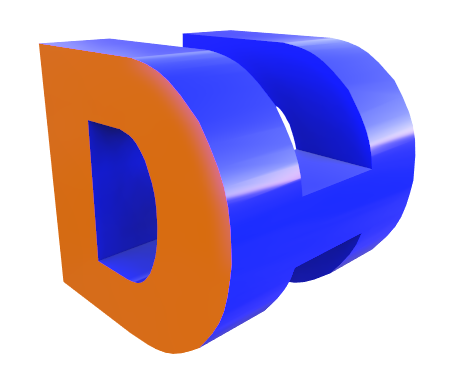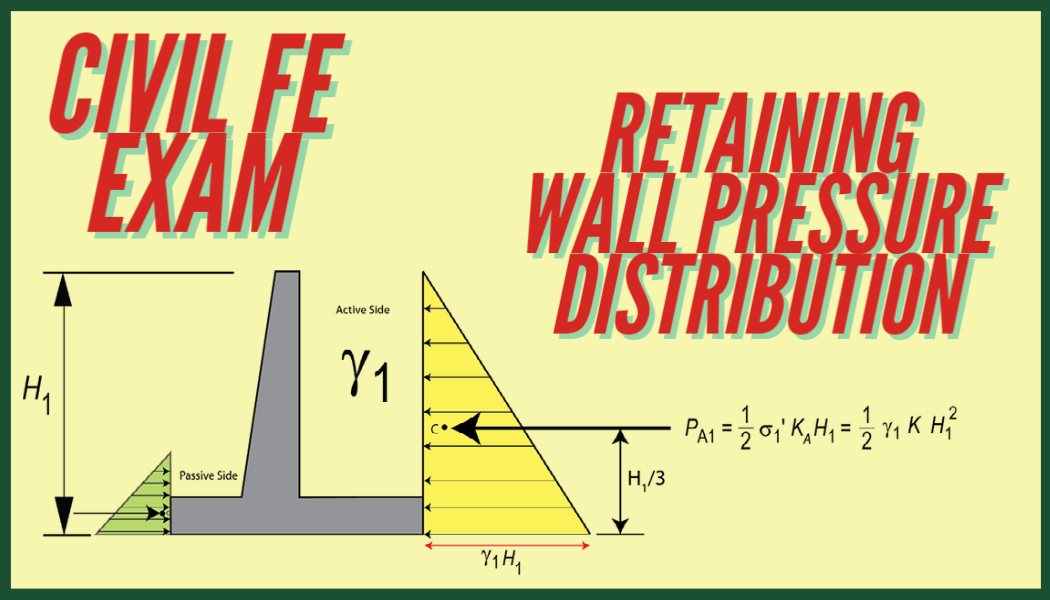Retaining structures – Pressure Distribution
For the Civil FE exam, under knowledge area number 12. Geotechnical Engineering, the NCEES FE exam specifications tell us we have to understand how to analyze the stability of retaining structures – E. Stability of retaining structures (e.g., active/passive/at-rest pressure).
Before we can do this, we must have a complete understanding of how the pressure is disturbed along the active side of a retaining wall considering:
- Active Rankine coefficient
- Total stress
- Pore water pressure
- Effective stress
- Water table location
- Surcharge load
With a clear understanding of how the active pressure is distributed both qualitatively and quantitively, we can determine the active pressure force per unit length of wall PA.
To prepare for your FE exam, use the pressure distribution diagrams shown below to help you determine that crucial pressure force we will always need when conducting a stability analysis.
Active Pressure Distribution (Dry Soil)
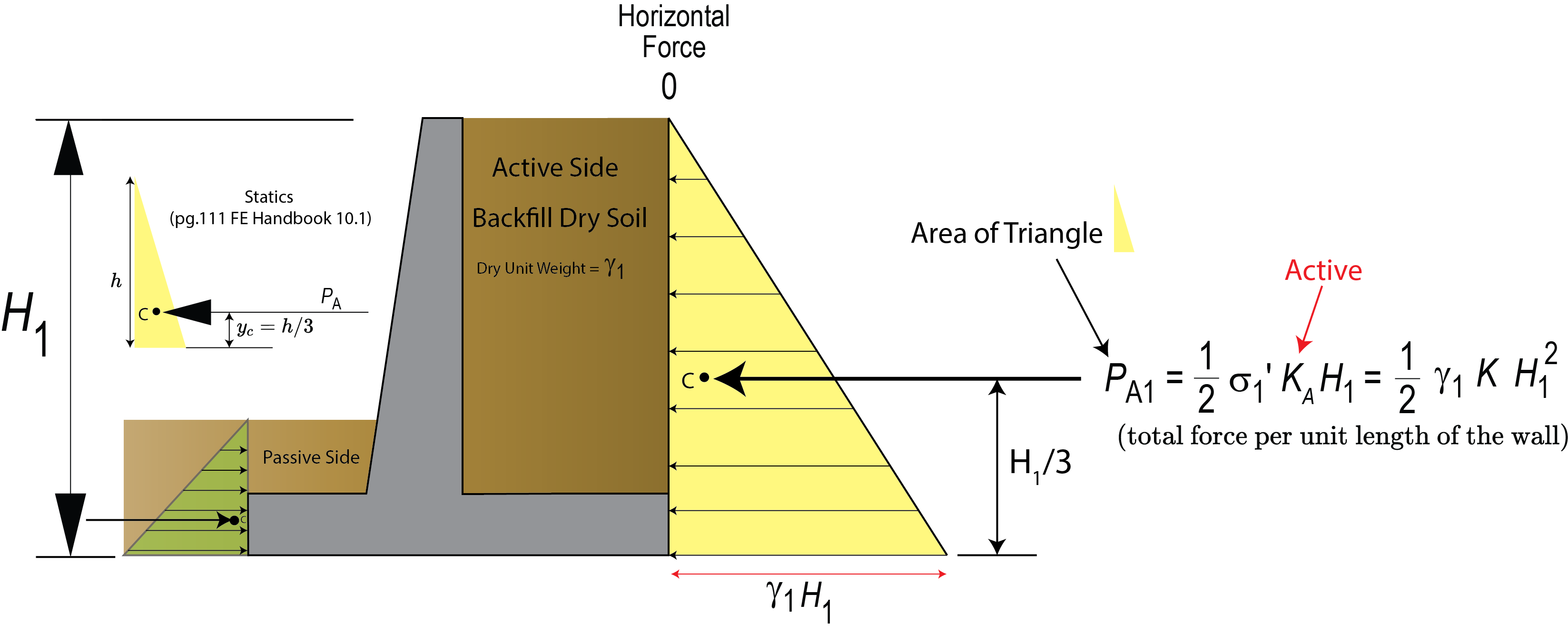
The location from the bottom of the pressure force (PA1) can be found by using the table on page. 111 in FE Handbook 10.1. This is the y-distance centroid for a triangle shape.
Active Pressure Distribution (Partially Submerged Soil)
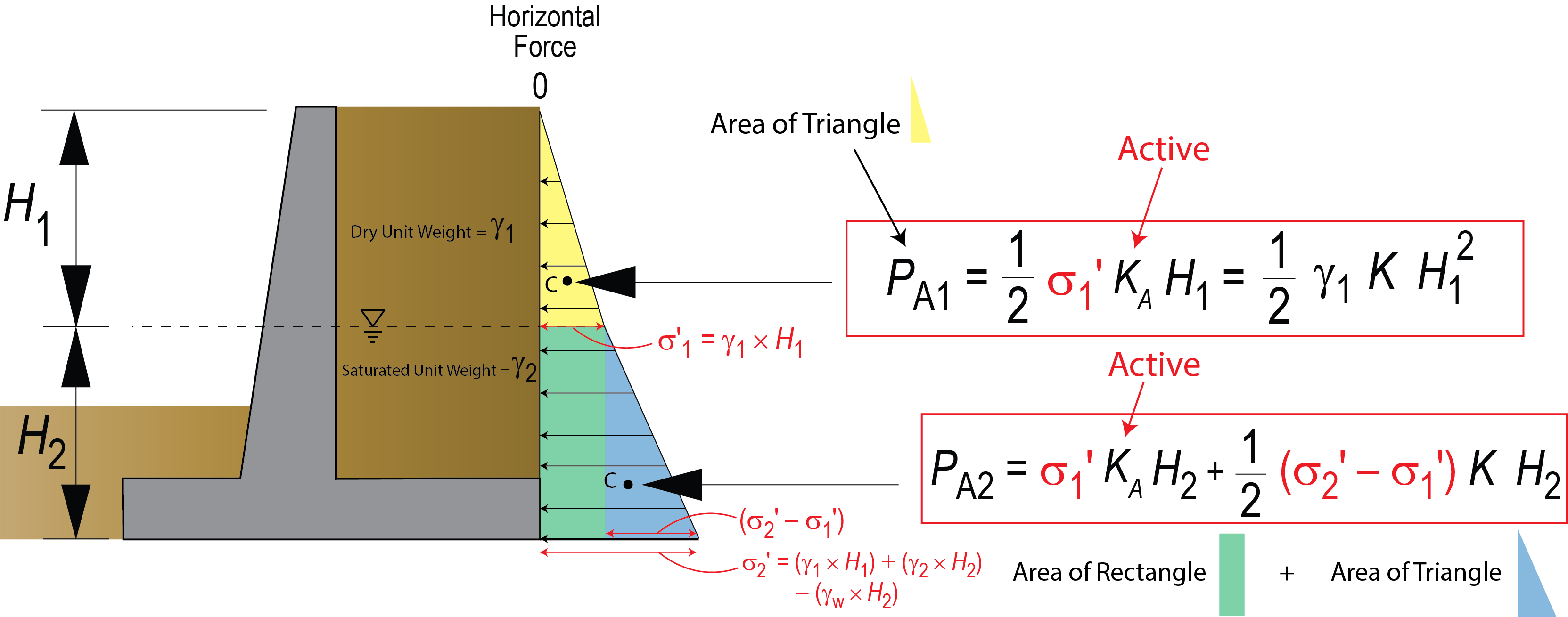
The locations from the bottom of the pressure forces (PA1 and PA2) can be found by using the table on page. 111 in FE Handbook 10.1. This is the y-distance centroid for a triangle shape and a trapezoidal shape.
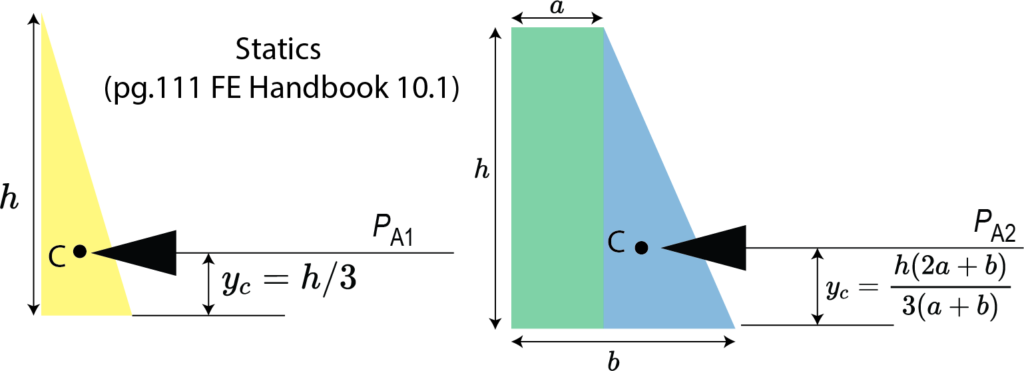
Active Pressure Distribution (Completely Submerged Soil)
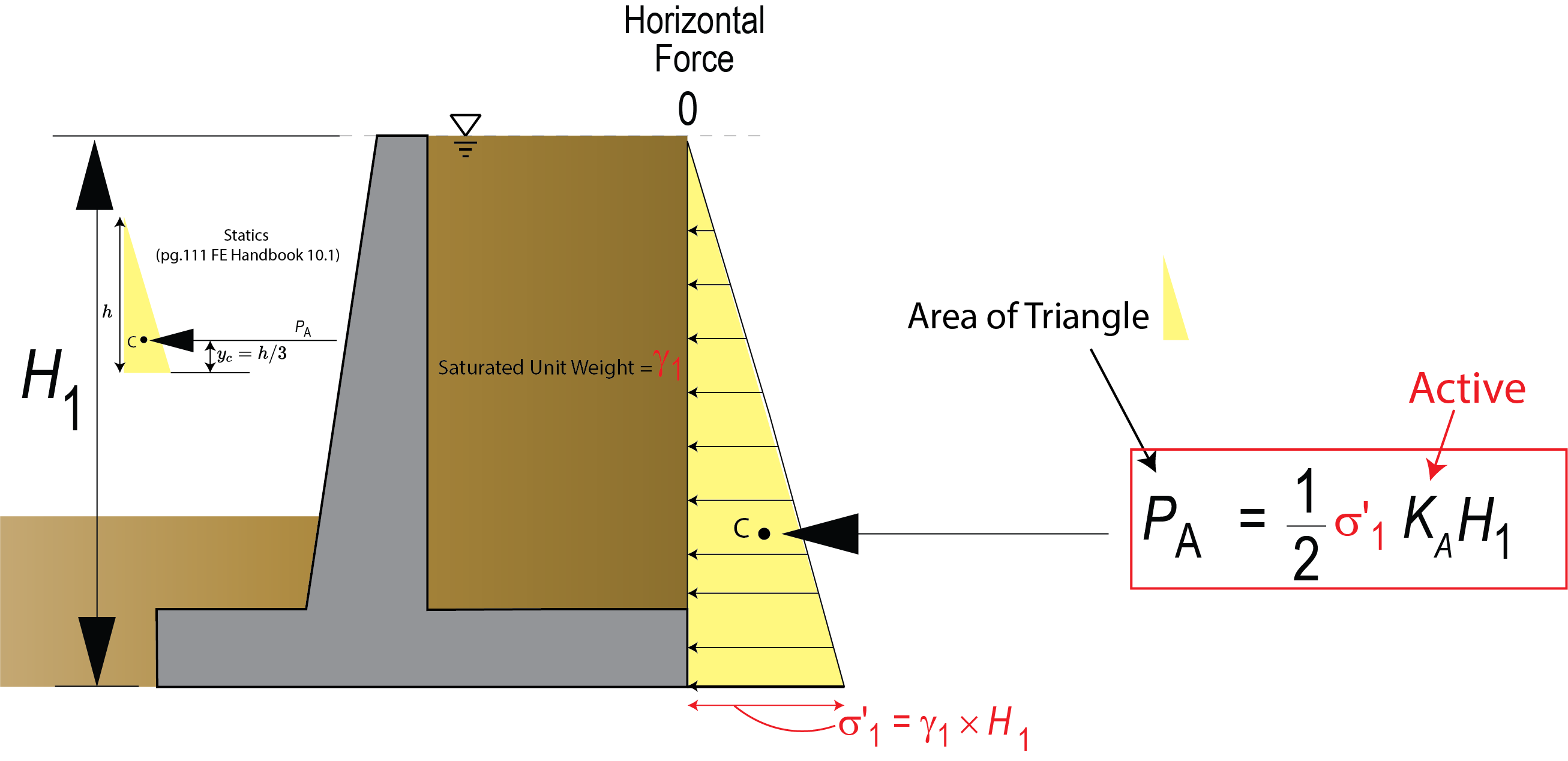
Active Pressure Distribution (Partially Submerged soil with Surcharge Load)

The location from the bottom of the pressure force (PA) can be found by using the table on page. 111 in FE Handbook 10.1. This is the y-distance centroid for a trapezoidal shape.
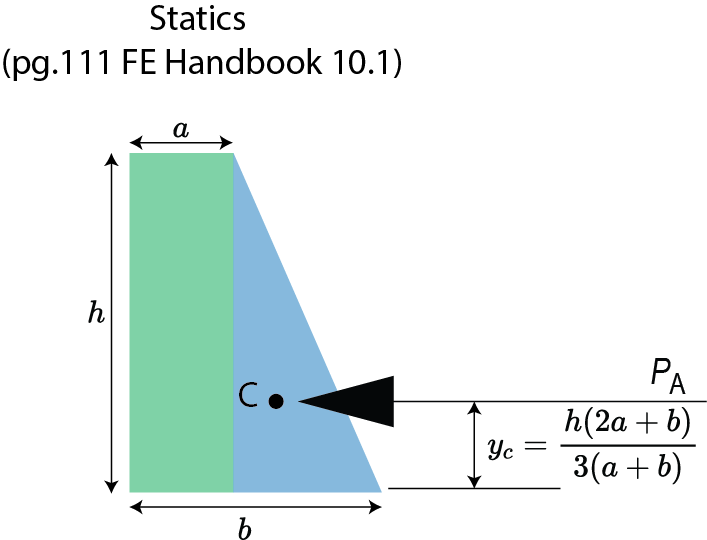
Pressure Distribution (Bearing Pressure)
Since the stem of the retaining wall is located off center with respect to the centroid of the wall, eccentricity is said to exist where a bending moment in produced. In this case, the pressure developed is not uniform and can be evaluated as a combined loading case.

FE Exam Prep Course
If you are interested in taking your FE exam prep preparation an extra step further, our FE exam review course covers the step-by-step process you can apply to analyze a retaining structure for stability. The questions covered in the course are guaranteed to help you answer any FE exam question you may face.

CIVIL FE EXAM PREP COURSE
best fe exam prep course
best fe exam review course
best fe exam prep
fe exam prep courses
fe quick review civil

